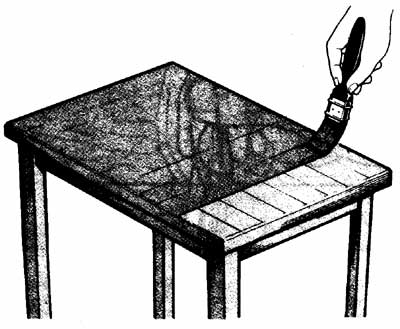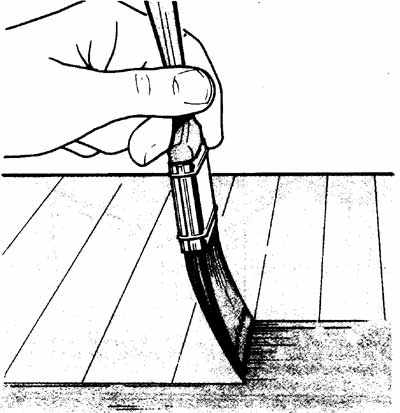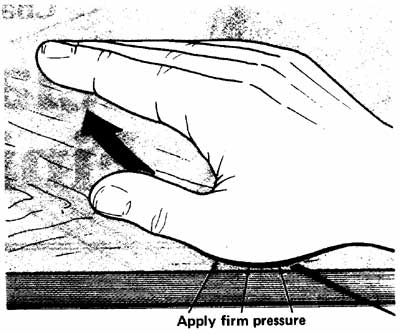Putting the finish on furniture is the final payoff for all the hours you've spent removing the old finish, making repairs, sanding, staining, and smoothing. Some might consider the finishing step as routine, others might think it's creative. Either way, it is usually easy to do, if you use the right materials, take your time, and exercise a little patience. In this article, we'll discuss how to pick the best finish for your furniture wood. We'll also review some application techniques, including preparation work and drying tips, so whatever finish you choose should provide a long-lasting look.
Types of Finish
Furniture finishes can be classified into several basic types: varnish, penetrating resin, shellac, lacquer, wax, and oil. All these finishes are designed to protect the wood and to bring out its natural beauty, and all of them can be assessed in terms of how well they accomplish these objectives. Consequently, choosing a finish comes down to two essential factors: How do you want the wood to look? How durable do you want the finished surface to be?
Of the six basic finishes, all can be beautiful, but when it comes to durability, two types outperform all the others: varnish and penetrating resin. Varnish, the most durable of all finishes, is available in high-gloss, satin, and flat forms for whatever surface shine you want. Applying varnish can be difficult, but the results are worth the work. Penetrating resin sinks into the wood to give it a natural look and feel; it is easy to apply and durable. The other furniture finishes do have their advantages.
Oil, for instance, produces a very natural finish. Shellac dries fast and is easy to use. But for most refinishing, varnish or penetrating resin is probably the best choice.
Whatever finish you choose, it's important to know exactly what you're working with. Some finishes can be mixed and some cannot. Each finish has its own individual application techniques; each finish requires different tools and materials. Before you buy and apply a finish, always read the ingredient and application information on the container. And always follow the manufacturer's instructions and recommendations.
The one requirement common to all finishes is a dust-free environment during application. Providing this environment isn't easy, but it can be done. Consider using a finish that dries with a matte or flat surface; this type of finish gives you the opportunity to remove dirt and lint with rubbing abrasives.
In most cases, how a piece of furniture stands up to wear is as important as how it looks. Durability is a primary consideration in choosing a finish. The most durable finishes, varnish and penetrating resin, are thus the two basic finishes for refinishing. Varnish is the more protective of the two because it is a surface coat; damage to the varnish does not always extend to the wood. Penetrating resin hardens in the wood itself. Although it doesn't protect the surface from damage as effectively as varnish, it may stand up to heavy use better because it's easy to reapply and doesn't chip or craze.
If varnish is your choice, check the next section on how to work with this durable, slow-drying finish.
Types of Finish
Furniture finishes can be classified into several basic types: varnish, penetrating resin, shellac, lacquer, wax, and oil. All these finishes are designed to protect the wood and to bring out its natural beauty, and all of them can be assessed in terms of how well they accomplish these objectives. Consequently, choosing a finish comes down to two essential factors: How do you want the wood to look? How durable do you want the finished surface to be?
Of the six basic finishes, all can be beautiful, but when it comes to durability, two types outperform all the others: varnish and penetrating resin. Varnish, the most durable of all finishes, is available in high-gloss, satin, and flat forms for whatever surface shine you want. Applying varnish can be difficult, but the results are worth the work. Penetrating resin sinks into the wood to give it a natural look and feel; it is easy to apply and durable. The other furniture finishes do have their advantages.
Oil, for instance, produces a very natural finish. Shellac dries fast and is easy to use. But for most refinishing, varnish or penetrating resin is probably the best choice.
Whatever finish you choose, it's important to know exactly what you're working with. Some finishes can be mixed and some cannot. Each finish has its own individual application techniques; each finish requires different tools and materials. Before you buy and apply a finish, always read the ingredient and application information on the container. And always follow the manufacturer's instructions and recommendations.
The one requirement common to all finishes is a dust-free environment during application. Providing this environment isn't easy, but it can be done. Consider using a finish that dries with a matte or flat surface; this type of finish gives you the opportunity to remove dirt and lint with rubbing abrasives.
In most cases, how a piece of furniture stands up to wear is as important as how it looks. Durability is a primary consideration in choosing a finish. The most durable finishes, varnish and penetrating resin, are thus the two basic finishes for refinishing. Varnish is the more protective of the two because it is a surface coat; damage to the varnish does not always extend to the wood. Penetrating resin hardens in the wood itself. Although it doesn't protect the surface from damage as effectively as varnish, it may stand up to heavy use better because it's easy to reapply and doesn't chip or craze.
If varnish is your choice, check the next section on how to work with this durable, slow-drying finish.
Advertisement




